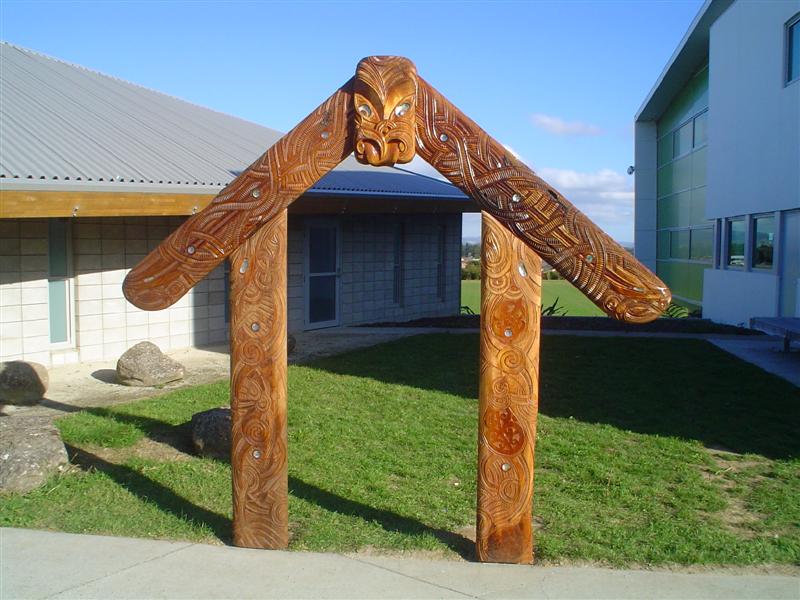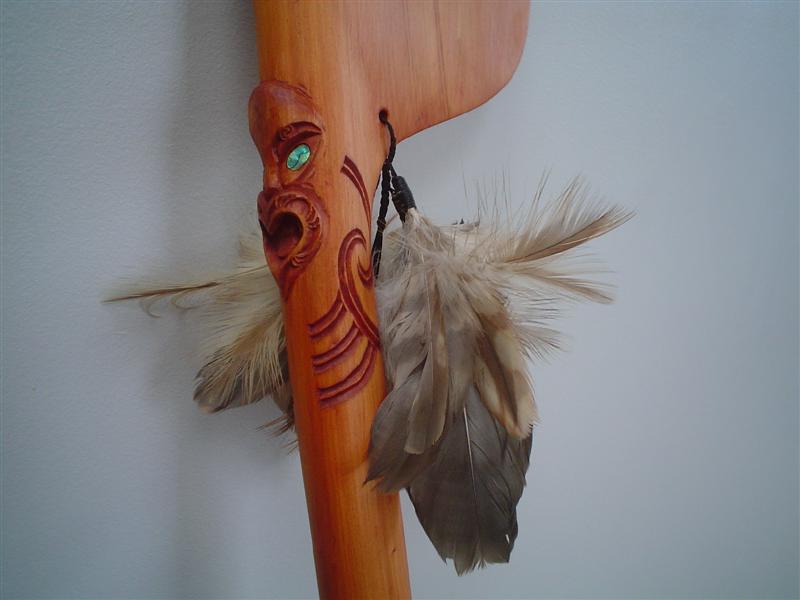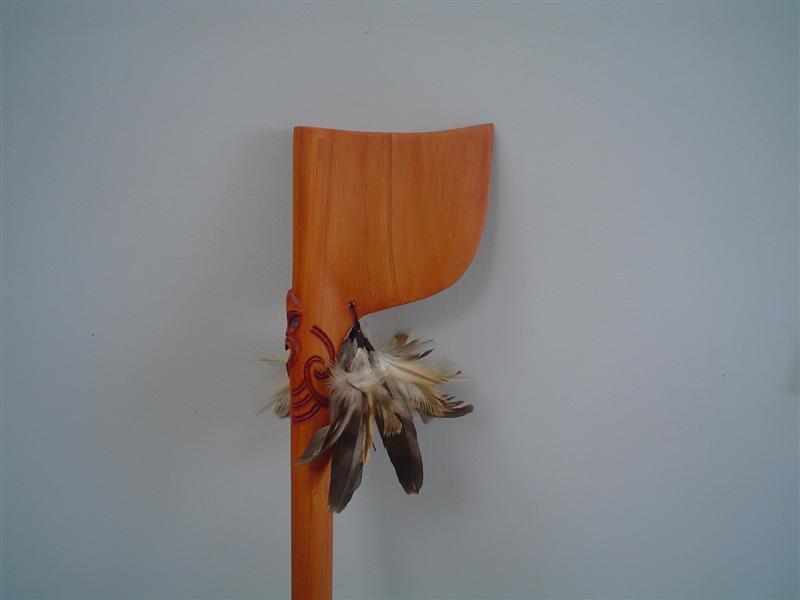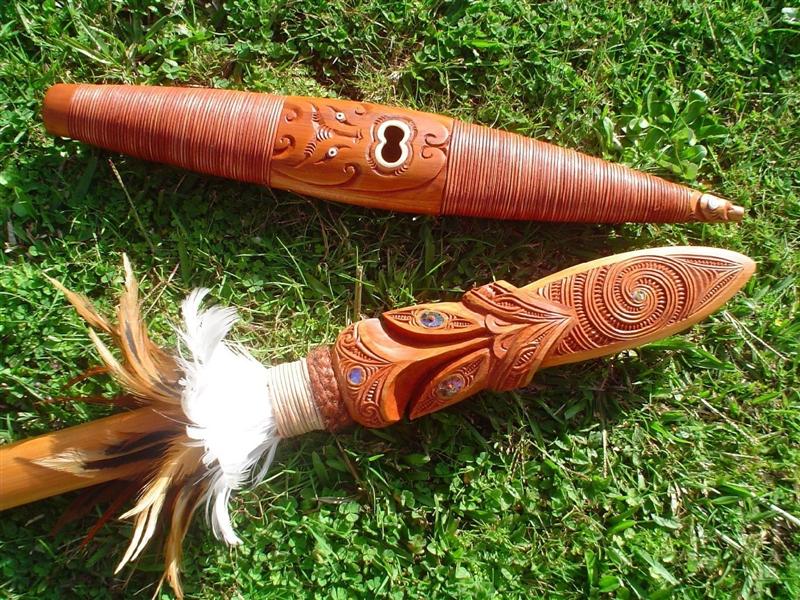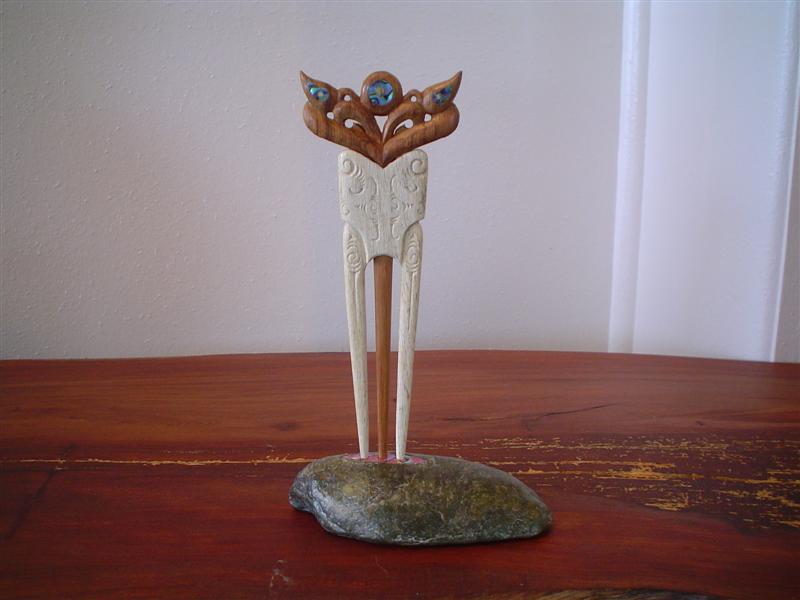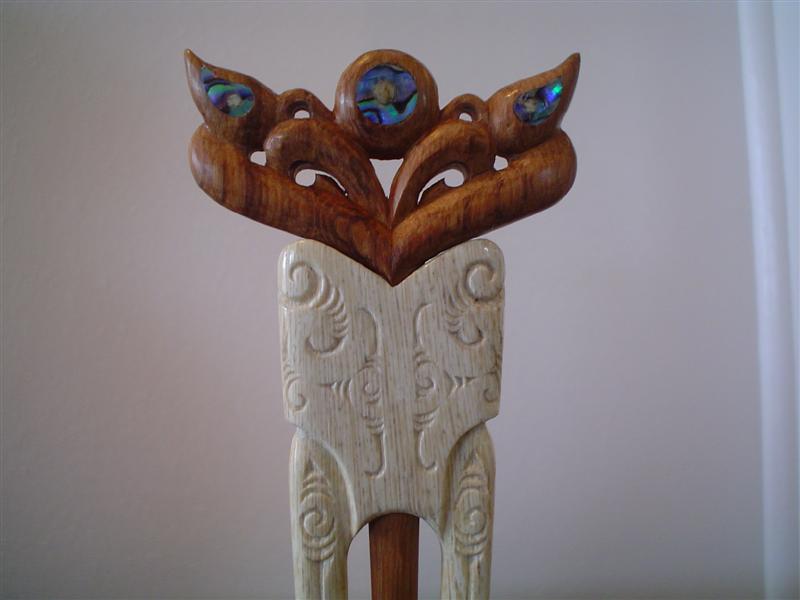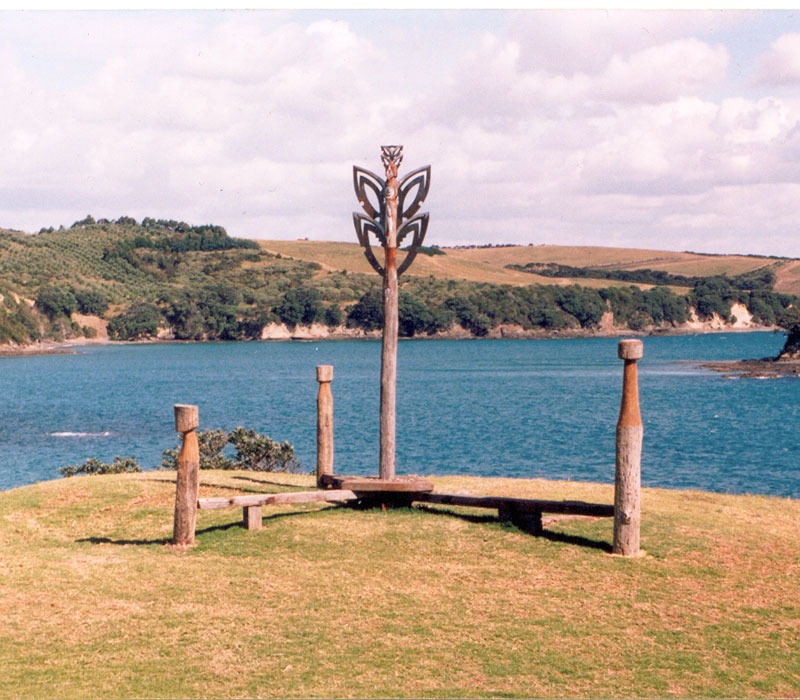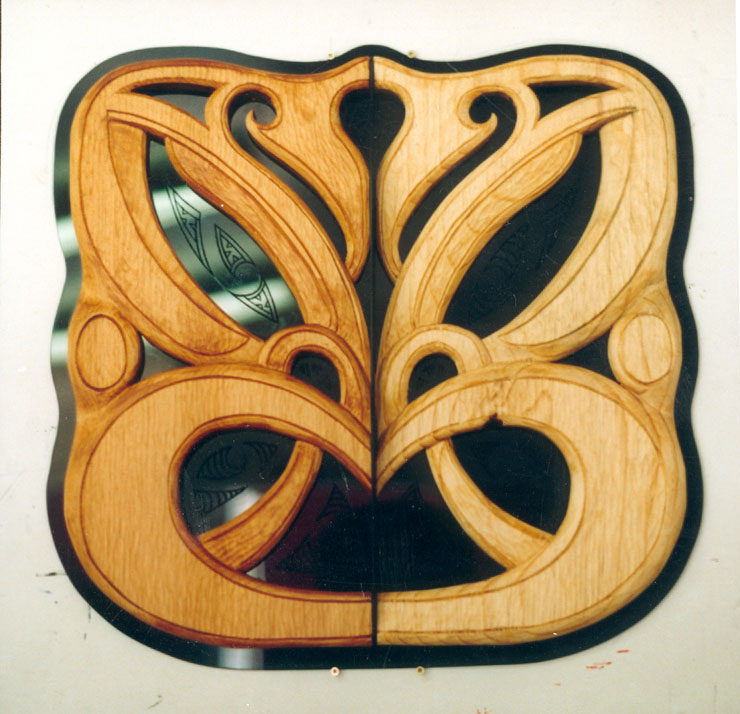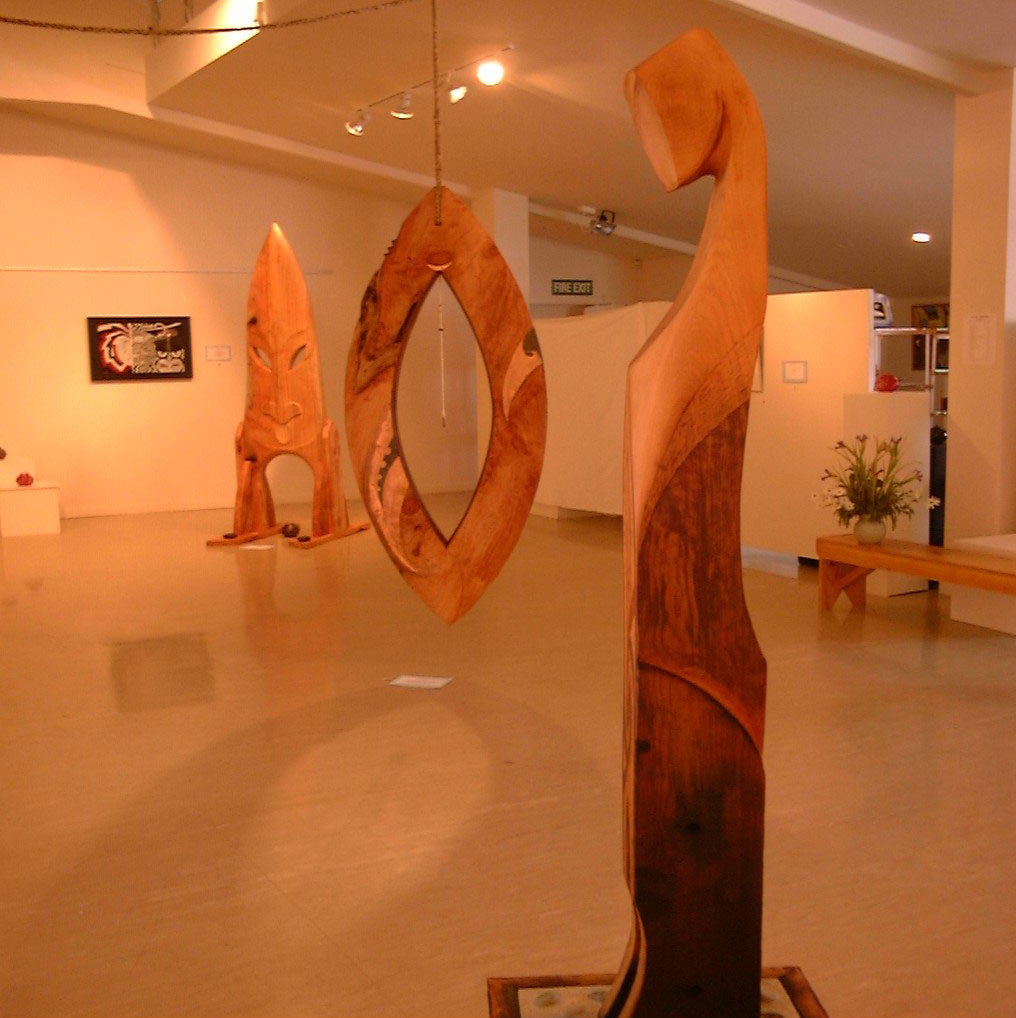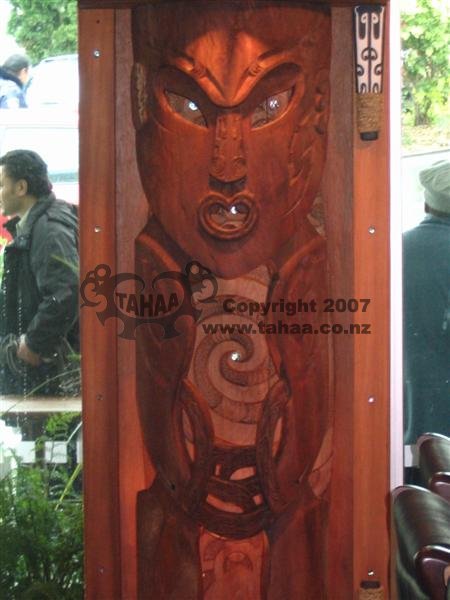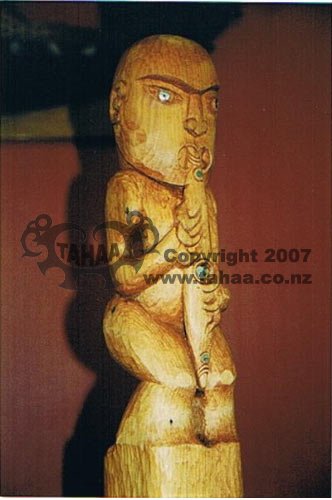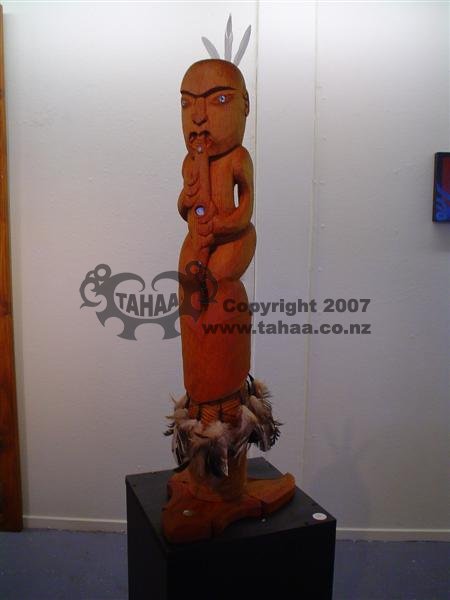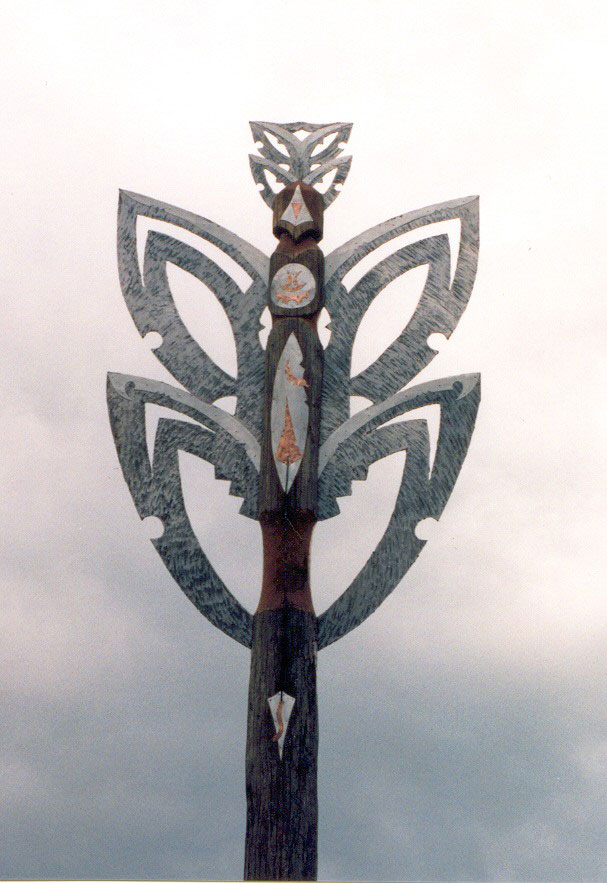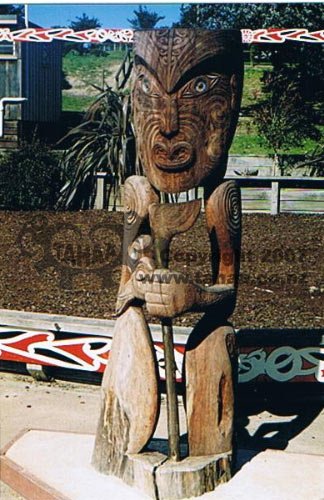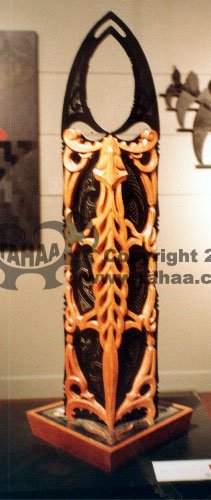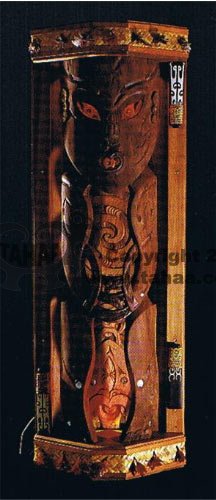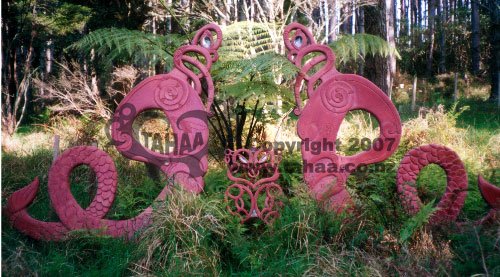Maori carving or whakairo has developed over the centuries. The most common mediums worked are wood, pounamu (nephrite jade), human flesh (Ta moko or tattooing), animal and human bone and onewa (basalt).
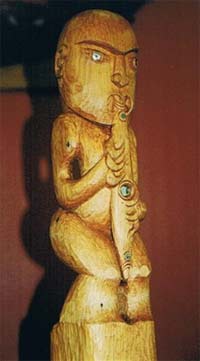
Maori carving is unique in the world as each taonga (collectors item) encompasses three main kaupapa (philosophies).
- Record of History and events
- Identity
- Decoration
Although the Maori did not have a recorded history in the form of the alphabet and books, what many people fail to realise is that the carvings themselves are in actual fact recorded history. Every piece carved traditionally had a Kaupapa and everyone could read them. The shape of the heads, position of the body as well as the surface patterns came together in each piece to record and remember events.

